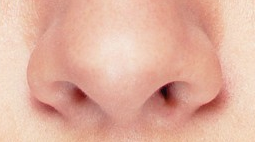The British Association of Aesthetic Plastic Surgeons (BAAPS) recently revealed that the popularity of cosmetic surgery in the UK took a nose dive in 2014. The reported number of procedures performed during the year was down by 9% from 50,122 in 2013 to 45,406 with the greatest decline in breast implants and nose jobs.
Following the 16.5% rise in the number of procedures in 2013, which BAAPS said was “the most impressive rise in demand since the start of the recession in 2008”, clinical negligence law firm Penningtons Manches believe that one reason for this unexpected reversal of the upward trend could be the intense scrutiny that the industry has been under during the last 12 months and the calls for tighter regulations.
BREAST IMPLANT FIGURES DEFLATED
While breast augmentation remained the most popular procedure in 2014 with 8,619 procedures being performed, this was 23% down on the 2013 figure of 11,135. This could be partly due to the PIP implant scandal which resulted in a large number of women having their implants replaced. The 2013 figures may, therefore, have been artificially inflated.
Nose jobs also fell out of favour with only 3,690 procedures in 2014, down 24% from 2013. Tummy tucks were also down 20% with just 2,713 procedures in 2014. The “tweaked, not tucked” look appears to have become the new aesthetic ideal with an increasing demand for more subtle and understated procedures.
For the second year running, the next most popular procedure for women was blepharoplasty (eyelid surgery) with 7,752 procedures, a small 1% droop in the 2013 figures. However, eyelid surgery was the most popular operation for men in 2014 overtaking rhinoplasty (nose job). The number of brow lifts also fell by 7%.
ON THE UP
There was a 1% increase in the number of face and neck lifts to 6,402 while breast reduction surgeries were also up 1% to 5,528. The biggest increase was for body contouring procedures – particularly liposuction – which rose by 7% in 2014 to 4,627. Although the rise was comparatively insignificant compared with the 43% increase in 2013, liposuction continues to be a popular procedure. This is probably because it has a proven track record, can be done as an outpatient procedure, and delivers immediate results.
TOP 10 PROCEDURES IN 2014
- Breast augmentation – down 23% to 8,619
- Eyelid surgery – down 1% to 7,752
- Face and neck lifts – up 1% to 6,402
- Breast reduction – up 1% to 5,528
- Liposuction – up 7% to 4,627
- Nose jobs – down 24% to 3,690
- Fat transfer operations – down 4% to 3,155
- Tummy tucks – down 20% to 2,713
- Brow lifts – down 7% to 1,978
- Ear corrections – down 20% to 942
GLOBAL TRENDS
It is anticipated that more than 25 million cosmetic surgical and non-surgical procedures were performed worldwide in 2014. In 2013, the United States topped the international chart with almost four million people going under the knife or needle, followed by Brazil with more than two million procedures. The country trends are expected to remain similar this year but countries like South Korea and Dubai should move up the ranks. At the end of last year, the Dubai Health Authority set a target to attract 500,000 medical tourists a year by 2020.
The United States is still the most popular country for body contouring procedures and Italy continues to be the main location for anti-ageing cosmetic procedures such as Botox injections and injectable fillers. The most common cosmetic surgeries done in Brazil are breast implants and liposuction while Taiwan is the country where cosmetic surgery is mainly done on the face.
Countries offering the cheapest price for procedures in 2014 included Thailand and the Dominican Republic – but even these cannot match India which offered the lowest price due to the country’s cheap economy.
THE EXPERT VIEW
Looking at the 2014 UK figures overall, the number of female cosmetic surgery patients decreased by 9% and the males by 15% despite the boom over the past decade in male surgery. While 2014 saw a reduction in the popularity of cosmetic surgery in the UK, the global numbers of cosmetic surgeries are expected to continue their upward trajectory. This begs the question – are more Britons going abroad for treatment?
Experts attribute the new trends in the UK to an increasingly educated public who have a greater awareness of the associated risks and dangers and realise that surgery is rarely a quick fix. Whatever the reason, the age of the ‘less-is-more’ look appears to have arrived and the Penningtons Manches team welcomes the new trends which suggest that people are adopting a more cautious, sensible and rational approach to cosmetic surgery.

